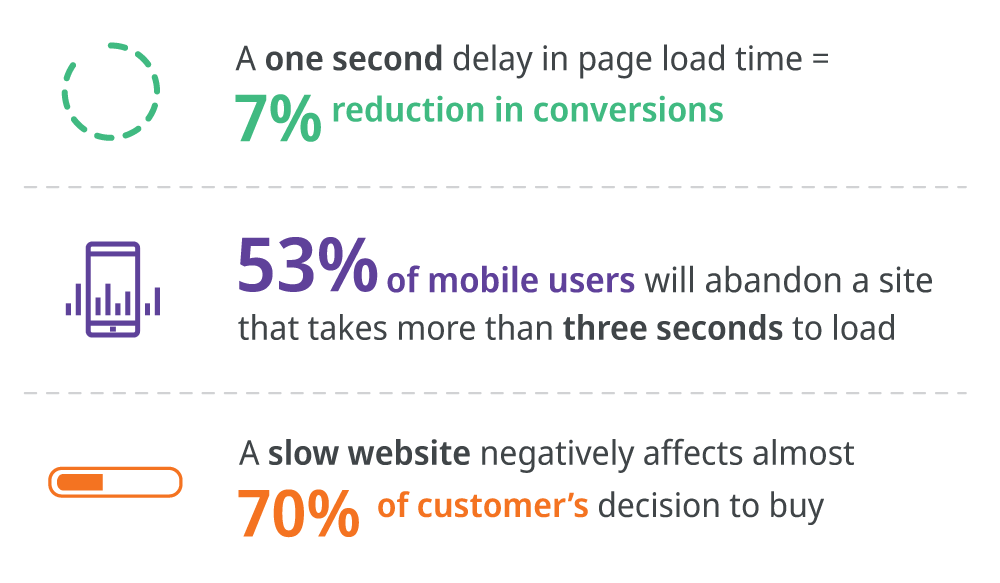January 19, 2023
A nuvem, combinada com tecnologias digitais, reinventou a forma como os varejistas se conectam e atendem seus clientes. Outrora domínio de megalojas e plataformas de comércio eletrônico com orçamento e recursos para oferecer suporte à infraestrutura local, hoje a nuvem está desbloqueando experiências digitais do cliente para varejistas de todas as formas e tamanhos.
E os comerciantes estão adorando, capazes de criar experiências personalizadas e selecionadas em vários canais enquanto aumentam as taxas de conversão e o valor médio do pedido (AOV). Mas nem sempre foi assim.
>> Agende uma demonstração personalizada com nossa equipe de especialistas e veja como o iPaaS da Digibee trará eficiência ao seu negócio.
História do comércio eletrônico
Primeiros dias
O advento do comércio eletrônico remonta à década de 1960, quando a IBM lançou seu sistema de processamento de transações online (OLTP) para processar transações financeiras em tempo real.
A tecnologia foi utilizada no desenvolvimento de um sistema informatizado de reserva de passagens para a American Airlines chamado Semi-Automatic Business Research Environment (SABRE).
O sistema conectava computadores em diferentes agências a um grande computador mainframe IBM para processamento simultâneo de transações, com todos os agentes acessando as mesmas informações ao mesmo tempo.on at the same time.
![]() *Crédito da foto: IBM Icons of Progress
*Crédito da foto: IBM Icons of Progress
A custo de infraestrutura $ 40 milhões para desenvolver e instalar, o equivalente a mais de $ 402 milhões em 2022.
Contemporâneo
As compras online que conhecemos hoje não surgiram até a chegada da internet, com a primeira transação de varejo segura pela web ocorrendo em 1994. A Amazon embarcou no ano seguinte, lançando seu site de compras online (a maior livraria da Terra) e o mundo nunca olhou para trás.
Hoje, os varejistas de sucesso utilizam a nuvem para oferecer suporte a uma variedade de modelos de negócios digitais, incluindo online, na loja e híbridos.
Mas, embora as compras on-line tenham se tornado apostas importantes para a maioria dos varejistas (quase todo mundo tem um site), otimizar a eficiência e a lucratividade na nuvem depende totalmente da tecnologia que está por trás dela.
Agilidade e resiliência

Com o sucesso intimamente ligado aos hábitos em constante mudança (e inconstantes) dos consumidores, é imperativo que a tecnologia de nuvem no varejo suporte mudanças rápidas. Isso nunca foi mais evidente do que durante a pandemia, quando os consumidores dos EUA entraram online em massa, acrescentando US$ 218.53 bilhões às vendas projetadas de comércio eletrônico nos EUA em um único ano (2020-2021).
Os varejistas que já tinham sua tecnologia de nuvem em ordem puderam mudar rapidamente e compartilhar as recompensas. Outros não tiveram a mesma sorte, incluindo Neiman Marcus Group, JCPenney, J. Crew e outros marcas líderes que entrou com pedido de proteção contra falência do Capítulo 11 durante a pandemia.
Varejo em tempo real (e na velocidade da luz)
A velocidade é essencial para a agilidade e um dos aspectos mais críticos das soluções de TI de varejo na nuvem. Sem ele, até mesmo o site de comércio eletrônico mais chamativo falhará: A velocidade também é importante no back-end. Por exemplo, no início de sua jornada na nuvem, muitos varejistas selecionaram a arquitetura monolítica para seu site de comércio eletrônico, a prática de projetar e desenvolver um aplicativo completo em uma única unidade (front-end, API, serviços, balanceador de carga, banco de dados etc.).
A velocidade também é importante no back-end. Por exemplo, no início de sua jornada na nuvem, muitos varejistas selecionaram a arquitetura monolítica para seu site de comércio eletrônico, a prática de projetar e desenvolver um aplicativo completo em uma única unidade (front-end, API, serviços, balanceador de carga, banco de dados etc.).
Esse modelo fazia sentido, pois oferecia todas as funcionalidades de comércio eletrônico de que os varejistas precisavam em uma unidade ou produto. Infelizmente, aplicativos monolíticos não são muito ágeis. Em vez disso, eles estão fortemente acoplados, o que significa que, se algo der errado com uma função específica, todo o aplicativo poderá travar, incorrendo em tempo de inatividade caro. Além disso, novos recursos são demorados e complicados de adicionar, afetando a escalabilidade.
Como resultado, muitos varejistas estão migrando para a arquitetura de microsserviços, uma coleção de arquivos executáveis separados que podem ser mantidos e substituídos de forma independente sem reimplantar todo o aplicativo.
Por exemplo, um aplicativo de comércio eletrônico terá funcionalidades como listagem de produtos, adição de produtos a carrinhos, check-out de um pedido e pagamento. Com os microsserviços, cada uma dessas funções é desenvolvida e implantada de forma independente e integrada por meio de um gateway de API para uma pilha de tecnologia totalmente modular e combinável.
Os varejistas podem modificar preços, produtos e workflows no momento sem interromper o negócio. Quando (e não se) o mercado mudar, o retalhista pode ajustar a sua infraestrutura em tempo real para garantir que permanece em sintonia com o comportamento do consumidor.
Integrando comércio eletrônico
Uma arquitetura de microsserviços depende da integração de sistema e dados para conectar todas as partes móveis.
A tecnologia de plataforma como serviço (iPaaS) de integração empresarial, em particular, suporta a flexibilidade de uma pilha de tecnologia combinável, onde aplicativos legados são substituídos e/ou conectados com aplicativos baseados em nuvem.
Com fluxos de dados simplificados de sistemas de informações de varejo, a empresa se beneficia de análises precisas, essenciais na previsão de varejo para prever estoque e demanda. Essas conexões ágeis permitem que a empresa ajuste facilmente sua infraestrutura para alavancar novas inovações sem incorrer em tempo de inatividade para executar o trabalho.
A Digibee fez parceria com muitos varejistas de sucesso para implementar sistemas e integração de dados. Um bom exemplo é Payless, uma rede internacional de varejo de calçados self-service. Ao implementar o eiPaaS da Digibee, a empresa conseguiu integrar uma plataforma segura de comércio eletrônico em mais de 200 lojas em 15 países, em menos de 30 dias, sem tempo de inatividade.
Com o DigiBee, Payless otimizou sua agilidade, mantendo os negócios normais mesmo durante picos de vendas em eventos de alto volume, como a Black Friday.
Varejo em 2023 e além
Um futuro saudável depende da capacidade do varejista de oferecer experiências digitais incríveis aos clientes. Para alcançar esses resultados, a empresa deve adotar rapidamente as inovações à medida que elas surgem, ou corre o risco de ficar para trás.
Uma arquitetura componível ou de microsserviços desempenha um papel crítico nesses resultados, permitindo que a organização substitua facilmente qualquer componente por algo melhor. Com o suporte da tecnologia eiPaaS, os varejistas podem evoluir rapidamente seus negócios.
Embora esse recurso tenha sido crítico durante a pandemia, ele também protege os negócios de interrupções no futuro, permitindo que os varejistas acomodem o que está por vir. E há muito para acomodar. Enquanto algumas tendências já estão em andamento, outras estão chegando:
- Experiências do cliente omnichannel (e otimizadas), incluindo interações digitais, na loja, híbridas e na calçada com interações face a face, computador e dispositivos móveis
- checkout sem caixa
- Provadores virtuais
- A transmissão ao vivo
- Programas de fidelidade integrados (proteção contra rotatividade de clientes)
- Links para mercados externos (ampliar o alcance do cliente)
- Novas tecnologias (NFT, o metaverso, AmazonGo Stores, etc.)
- Etc.
Hoje, as compras online são uma capacidade crítica para qualquer varejista, com sucesso dependendo da agilidade e resiliência do negócio diante da mudança. Os varejistas capazes de acompanhar e até prever o que vem a seguir serão os pioneiros, garantindo e aumentando sua participação no mercado.
Deixe a Digibee permitir a transformação digital do seu varejo
A tecnologia empresarial iPaaS da Digibee permite uma infraestrutura combinável baseada em nuvem, nivelando o campo de atuação para que varejistas de todos os tamanhos possam oferecer uma experiência de compra moderna enquanto amplificam sua voz e marca na nuvem. Contacte-nos para aprender mais ou agende uma demonstração.
– Um atraso de um segundo no tempo de carregamento da página = a Redução de 7% nas conversões
– 53% de usuários móveis vai abandonar um site que leva mais de três segundos para carregar
– Um site lento afeta negativamente a decisão de compra por quase 70% de clientes








